Deep Time Calendar
The geological record can be used as an environmental laboratory to reconstruct and understand deeper times. The ancient Lake Orcadie was part of the Devonian palaeogeography of what we know as Orkney today (Fig. 1). This lake was located at the south of the equator, and was subject to a very different climate than today, as the average temperature was 27.6 °C! The Orcadian basin accumulated meters and meters of laminated sediments – classified as part of the Old Red Sandstone – during millions of years under a climate-controlled environment that has left its deep time imprints on the rocks that we see today on the Orcadian coastline.
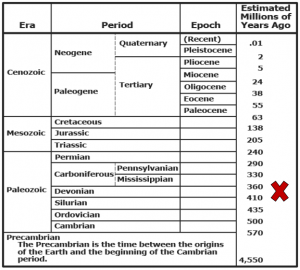
Figure 1. Geological time scale of the Earth. The red cross shows the chronology of the ancient Lake Orcadie more than 300-million-years ago.
When studying sediments and rocks, called environmental archives, they could be seen as books that can be read through time giving us insights on how past environments and climates changed. As the local geologist, and expert in these depositional environments, John F. Brown showed us, the remains of the Orcadian basin (Fig. 2) tell us a story of laminated sediment deposition recording cycles related to the position of our planet to the sun, sunspot periodicity and annual cycles. Hence, the laminations we see in the rocks are calendars of the deep time in which they were deposited.
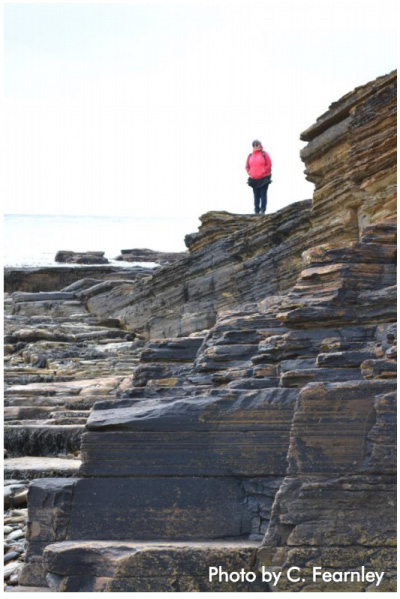
Figure 2. Geological remains of the Orcadian basin, Stromness.
1 – Calendar of annual deposition – varves
Laminations in the Old Red Sandstone unit are composed by dark clastic and light carbonate layers (Fig. 3). On the one hand, clastic laminae record the accumulation of sediments due to water run-off and river discharge under the wet season of the tropical climate that the Orcadian basin experienced during the Devonian. On the other hand, carbonate laminae are the result of the biogenic carbonate precipitation in the basin from the increase in pH and decrease of carbon dioxide levels triggered by seasonal photosynthesis. It is fascinating to realise that when we look at these laminations during a walk in the shore we are looking at seasons and years and we can disentangle the environmental conditions in which the different layers were deposited during the Devonian deep time.
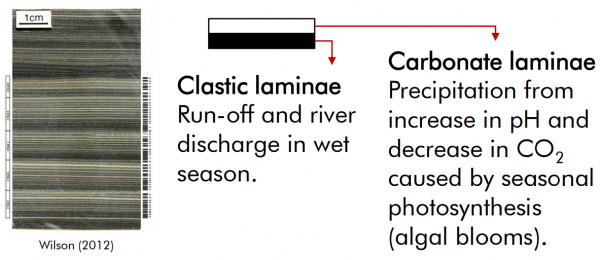
Figure 3. The annual alternation of dark and light laminations in a section of an Old Red Sandstone unit. Variation in the thickness of the dark layers follows a cyclical pattern as well (sunspot periodicity). Modified from Wilson (2012).
2 – Calendar of sunspot periodicity – ~11 years
There has been identified a periodic change in the Sun’s activity at cycles of ~ 11 years that has been related to fluctuations in the levels of solar radiation and the number of sunspots. The laminations of the Old Red Sandston unit are also calendars of these cycles. Changes in the thickness of the laminations follow ~ 11 year cycles (Fig. 4) that could be indicative of periodic changes in the weather. The thickness of the dark clastic layers decreases over a cycle (Figs. 3 and 4) indicating a shift from wetter (thicker layers = higher water run-off and river discharge) to drier (less thick layers = lower water run-off and river discharge) conditions. Next time you go to the shore watch it out! You could feel directly connected to what happened on the Sun’s surface millions of years ago.
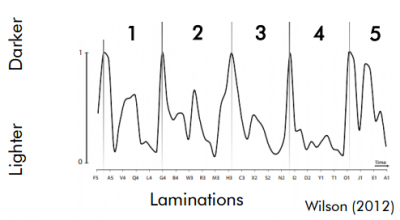
Figure 4. Graph showing the decrease in the thickness of the dark clastic layers over five cycles of Sun’s activity. Modified from Wilson (2012).
3 – Calendar of astronomical cycles – millennial-scale cyclicity
Changes on the Earth’s orbit (eccentricity), on the angle of the Earth’s axial tilt with respect to the orbital plane (obliquity), and on the Earth’s axis of rotation (precession) follow a cyclical pattern and are known as Milankovitch cycles (Fig. 5). In addition, all these changes affect our planet climate at regular intervals of thousands of years. These periodic fluctuations can be detected in the geological record of the Old Red Sandstone unit analysing different indicators (e.g. gamma ray) using sophisticated statistical analyses (e.g. spectral analysis) aimed at detecting periodicities (Kelly, 1992; Andrews et al., 2016). Rocks don’t lie! We are living in an astronomically-driven dynamic environment, even if our short life span cannot notice it.
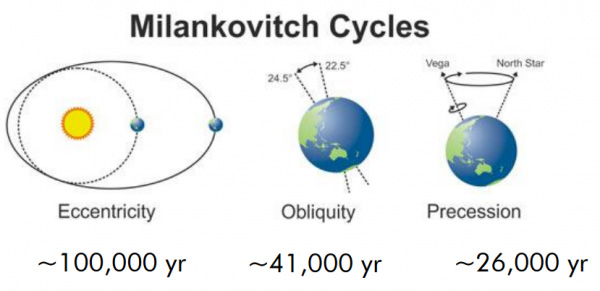
Figure 5. Milankovitch cycles and their periodicities.
References
Andrews, S.D., Cornwell, D.G., Trewin, N.H., Hartley, A.J., Archer, S.G., 2016. A 2.3 million year lacustrine record of orbital forcing from the Devonian of northern Scotland. Journal of the Geological Society 173, 474-488.
Kelly, S.B., 1992. Milankovitch cyclicity recorded from Devonian non-marine sediments. Terra Nova 4, 578-584.
Wilson, A.O., 2012. A high-resolution record of environmental and climatic change in a lacustrine sequence from the Devonian Orcadian Basin, Scotland. PhD Thesis, University of Aberdeen (http://ethos.bl.uk/OrderDetails.do?uin=uk.bl.ethos.558654).